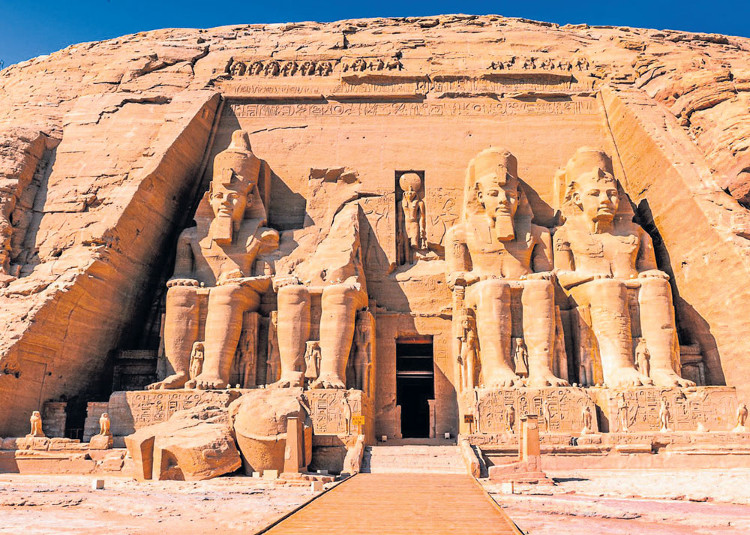Egypt reveals the tomb ruins of nearly 4,000 years old
Spanish scientists have discovered remnants of a grave garden of nearly 4,000-year-old Egyptian pharaohs in Luxor City, Upper Egypt.
In the announcement on May 4, the Egyptian Archaeological Department said the above-mentioned grave garden was revealed while scientists excavated the courtyard in front of a stone tomb of the Middle Kingdom period (about five years). 2050 - 1800 BC) of ancient Egypt, in the Draa Abul Nagaa cemetery - near the Valley of the Kings.

This is the first time scientists have discovered the remains of a grave in the ancient city of Thebes.(Illustration).
The garden is rectangular, with 3x2m in size, divided into 30cm square squares. On each of these boxes, there are two high levels that are supposed to grow flowers or small shrubs.
According to the ministry, this is the first time scientists have discovered the remains of a grave site in the ancient city of Thebes, although in the same region last month they discovered many remains of 3,500 years old and over 1,000. statue used in funerals.
Archaeologists argue that the discovery of the garden can evoke visualizations of the landscape, environment and techniques of gardening in Thebes - one of the most important cities in ancient Egypt, around 2000 Public. The newly revealed garden may have symbolic meaning and play an important role in the funeral rites of the time.
As one of the oldest civilized countries in the world, the Egyptian Government is always working hard to preserve its archaeological heritage.
In addition, the discovery of the secret of pharaohs and cultural practices throughout the country's history is also part of efforts to restore the severely degraded tourism industry in the past few years, due to the political stability and security issues.
- The tomb of 3,000 years of age is startling
- Discovered a 4,400-year-old tomb in Egypt
- 56 jars in the tomb of the prime minister of Egypt contain great secrets
- Discovered 4,000-year-old grave of the royal royal yacht of Egypt
- Discovered the 3400-year-old temple of the ancient Egyptians
- Egypt's earliest civilization will soon be clear thanks to this 7000-year-old city
- Egypt discovered ancient tombs from the time of Pharaoh Ramses II
- Discovered an ancient tomb over 3,500 years old in Egypt
- Egypt discovered many ancient tombs of the Pharaoh era
- The mummy of a woman intact 3,000 years in the ancient tomb of Egypt
- Discovering Pharaoh's tomb nearly 4000 years in Egypt
- Scary discovery about 1,400-year-old 'tomb of ghosts'
 Discovered an ancient centipede fossil 99 million years old
Discovered an ancient centipede fossil 99 million years old Discovered bat-like dinosaurs in China
Discovered bat-like dinosaurs in China Discovered a 200-year-old bronze cannon of the coast
Discovered a 200-year-old bronze cannon of the coast Discover 305 million-year-old spider fossils
Discover 305 million-year-old spider fossils